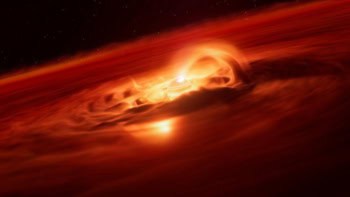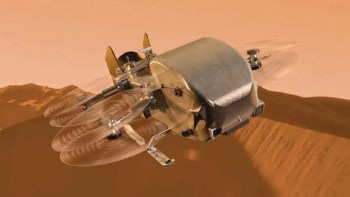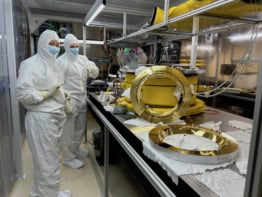
Researchers working on NASA’s Themis mission claim to have solved the 50 year-old mystery of what mechanism drives Earth’s auroras, or Northern and Southern Lights. They say it will help in the prediction of “space weather” that can harm astronauts and wreak havoc with both orbiting and ground-based electrical systems.
Scientists know that auroras are the result of electrons and other charged particles in the Earth’s magnetic blanket or “magnetosphere” colliding in the upper atmosphere. They also know that the occasional increases in size, brightness and colouring of the lights are caused by disturbances in the magnetosphere called substorms. However, there has never been consensus on how these substorms are triggered.
“More importantly for us, they have effects for life [on Earth],” said Nicky Fox, deputy project scientist on the Themis mission, in a press conference yesterday evening. “Everyone is familiar with changes in weather, but weather also occurs in space.
“This space weather describes the solar-driven effect that can influence the performance and reliability of satellites and ground-based technological systems such as power grids and pipelines, and it can also affect astronauts in orbit.”
The Sun ‘sneezes’
The $200m Themis mission, which launched almost a year and a half ago, comprises five identical satellites orbiting the Earth at different heights. This widespread group has proved essential to track the effects of substorms, which can be felt over a huge volume of space within a couple of minutes.
On 26 February this year Themis spotted an isolated substorm shortly before a network of ground-based observatories detected an auroral brightening over the northern US. The data collected verifies a mechanism for the triggering of substorms.
In this mechanism, the solar wind — a continuous outflow of charged particles driven by the Sun’s magnetic field — sometimes approaches Earth in an opposite polarity to our planet’s magnetic field. When this happens, the magnetic field lines stretch until they finally snap together — a process called “reconnection”, which releases an explosion of magnetic energy.
This energy travels from the Sun to the Earth and, when enough has entered the magnetosphere, it produces a substorm that culminates in the formation of an aurora (Science Express doi:10.1126/science.1160495). “If the Sun changes, the Earth will feel its effects,” continued Fox. “So it’s kind of like if the Sun sneezes, the Earth will catch a cold.”



